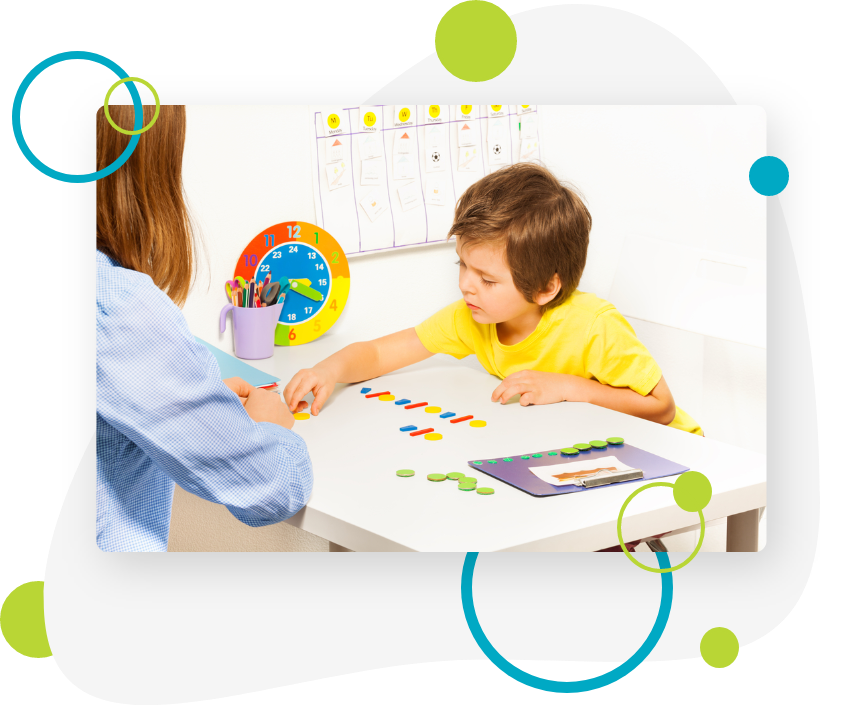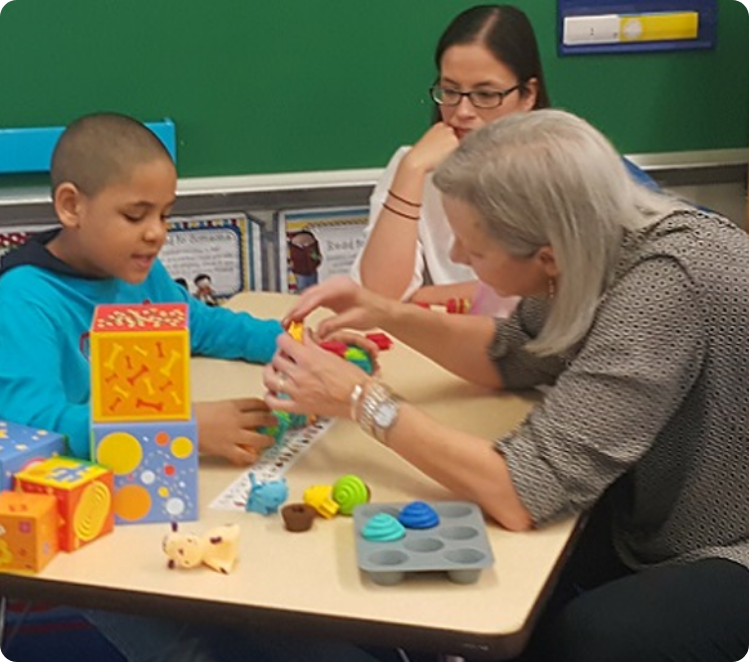About Autism and ABA Therapy
According to the CDC Autism spectrum disorder (ASD) is a developmental disability that can cause significant social, communication and behavioral challenges. There is often nothing about how people with ASD look that sets them apart from other people, but people with ASD may communicate, interact, behave, and learn in ways that are different from most other people.
The learning, thinking, and problem-solving abilities of people with ASD can range from gifted to severely challenged. Some people with ASD need a lot of help in their daily lives; others need less. The CDC estimates that 1 in 59 children are diagnosed with autism in the United States.
Applied Behavior Analysis “ABA” therapy is an evidenced based approach for treatment of children and adults with autism. A few quotes that summarize ABA therapy from national organizations:
The Surgeon General of the United States stated, “Thirty years of research demonstrated the efficacy of applied behavioral methods in reducing inappropriate behavior and in increasing communication, learning, and appropriate social behavior” (1999).
Autism Speaks states that “ABA is widely recognized as a safe and effective treatment for autism”; and “Behavior analysis is a scientifically validated approach to understanding behavior and how it is affected by the environment.”
The Centers for Disease Control (see types of treatment) indicated that a “… notable treatment approach for people with an ASD is called applied behavior analysis (ABA). ABA has become widely accepted among health care professionals and is used in many schools and treatment clinics….”
About Autism and ABA Therapy
According to the CDC Autism spectrum disorder (ASD) is a developmental disability that can cause significant social, communication and behavioral challenges. There is often nothing about how people with ASD look that sets them apart from other people, but people with ASD may communicate, interact, behave, and learn in ways that are different from most other people.
The learning, thinking, and problem-solving abilities of people with ASD can range from gifted to severely challenged. Some people with ASD need a lot of help in their daily lives; others need less. The CDC estimates that 1 in 59 children are diagnosed with autism in the United States.
Applied Behavior Analysis “ABA” therapy is an evidenced based approach for treatment of children and adults with autism. A few quotes that summarize ABA therapy from national organizations:
The Surgeon General of the United States stated, “Thirty years of research demonstrated the efficacy of applied behavioral methods in reducing inappropriate behavior and in increasing communication, learning, and appropriate social behavior” (1999).
Autism Speaks states that “ABA is widely recognized as a safe and effective treatment for autism”; and “Behavior analysis is a scientifically validated approach to understanding behavior and how it is affected by the environment.”
The Centers for Disease Control (see types of treatment) indicated that a “… notable treatment approach for people with an ASD is called applied behavior analysis (ABA). ABA has become widely accepted among health care professionals and is used in many schools and treatment clinics….”
ABA Therapy
Applied Behavior Analysis “ABA” therapy can benefit children in a variety of ways. Considered the Gold Standard of therapy for children with autism, ABA therapy focuses on principles and techniques of learning theory; working towards improving social behavior. ABA therapy can also help in developing new skill acquisition, refining previously learned skills and reducing socially significant problem behaviors. We provide services in your child’s natural environment and other settings as appropriate.




Early Intervention
ABA benefits children of all ages. Studies show that children who begin ABA therapy before age 5 have the best outcomes.
Early Intervention
ABA benefits children of all ages. Studies show that children who begin ABA therapy before age 5 have the best outcomes.


Our Services


ABA Therapy
Comprehensive And Focused ABA Therapy
According to the BACB Guidelines “Comprehensive” ABA therapy “effects multiple affected developmental domains, such as cognitive, communicative, social, emotional, and adaptive functioning” as well as maladaptive behaviors. The Guidelines state that intensity levels of 30-40 hours per week are common and necessary to achieve meaningful improvements in a large number of treatment targets.”
“Focused” ABA treatment is described in the BACB Guidelines as “…treatment provided directly to the client for a limited number of behavioral targets [functional skills, problem behaviors].” Intensity levels in a range of 10-25 hours per week are mentioned, with the caveat that the intensity may need to be higher depending on the nature of the target behaviors and other considerations, individualized to each client. For instance, behaviors that put the client and/or others at risk of harm may well warrant high-intensity focused ABA treatment for some period of time. Those may include maladaptive behaviors to be reduced and/or adaptive behaviors that need to be developed or strengthened in order to enhance the client’s health, safety, and overall functioning.
Social Skills Programs
Focused ABA services are appropriate for individuals who (a) need treatment only for a limited number of key functional skills, or (b) have such an acute problem behavior that its treatment should be the priority. Focused ABA usually ranges between 10-25 hours/week of direct treatment.
Examples of key functional skills include: establishing instruction-following, social communication skills, compliance with medical and dental procedures, sleep hygiene, self-care skills, safety skills, and independent leisure skills (for example, appropriate participation in family and community activities).




Social Skills Programs
Focused ABA services are appropriate for individuals who (a) need treatment only for a limited number of key functional skills, or (b) have such an acute problem behavior that its treatment should be the priority. Focused ABA usually ranges between 10-25 hours/week of direct treatment.
Examples of key functional skills include: establishing instruction-following, social communication skills, compliance with medical and dental procedures, sleep hygiene, self-care skills, safety skills, and independent leisure skills (for example, appropriate participation in family and community activities).


Parent Participation Training
Focused ABA services are appropriate for individuals who (a) need treatment only for a limited number of key functional skills, or (b) have such an acute problem behavior that its treatment should be the priority. Focused ABA usually ranges between 10-25 hours/week of direct treatment.
Examples of key functional skills include: establishing instruction-following, social communication skills, compliance with medical and dental procedures, sleep hygiene, self-care skills, safety skills, and independent leisure skills (for example, appropriate participation in family and community activities).
Our Blogs
Keep in touch with all the latest news,
stories and events at Autism Behavioral Institute


